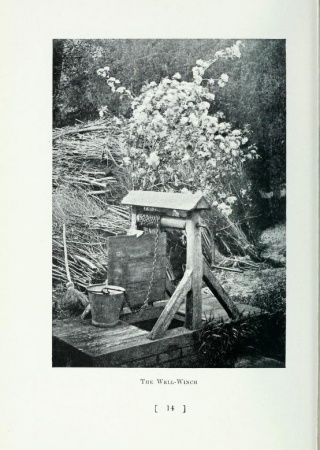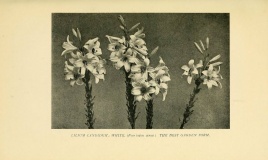Gertrude Jekyll
- Gertrude’s younger brother, Reverend Walter Jekyll, was friends with famous novelist Robert Louis Stevenson, who used Jekyll’s name in his novella Dr. Jekyll and Mr. Hyde (1848)?
- Gertrude’s landscaping style was influenced by color theory and by painter J.M.W. Turner?
- She loved studying plants, so she designed glass flower vases that would best display different plants in the most aesthetically-pleasing manner?
- Portraits of Gertrude, and her gardening boots, painted by William Nicholson were commissioned by Sir Edwin Lutyens, and now reside at the Tate Gallery?
- Gertrude was interested in preserving traditional country cottage décor, furniture and crafts, and wrote Old West Surrey (1904), including 300 of her own photographs, to keep account of disappearing rural arts and crafts?
- 1843 Gertrude is born in London.
- 1848 She and her family move to Surrey; she eventually goes to the Kensington School of Art, where she develops a love of gardening and landscaping.
- Lutyens (a friend of hers, and both of whom were involved in the Arts and Crafts movement) designs Gertrude’s home, “Munstead Wood,” in Surrey.
- 1897 Gertrude is awarded the Victoria Medal of Honor by the Royal Horticultural Society.
- 1929 She receives the Veitch Memorial Medal and the George Robert White Medal of Honor from the Massachusetts Horticultural Society.
- Gertrude composes more than 1,000 articles for different magazines, including Country Lifeand William Robinson’s The Garden.
- She writes over 15 books on landscaping, plants, gardening, and life.
- 1932 Gertrude passes away at age 89.
Gertrude Jekyll (1843-1932) was born in London, and in 1848, her family moved to Surrey, where she grew up. She went to Kensington School of Art, where she cultivated her passion for gardening and landscaping. She wrote many books on how to arrange gardens and how to study plants. Later in life, Gertrude partnered with English architect, Sir Edwin Lutyens, and as part of the Arts and Crafts movement they collaborated on many landscaping projects.
Gertrude’s landscaping style was Impressionistic, and some biographers believe this was because she was losing her eyesight as she grew older. She was a painter who often used watercolors. In texts of hers such as Colour Schemes for the Flower Garden, she promoted the modern notions--still in use today--of arranging warm and cool color groupings in landscape design.
Her love of plants of all varieties led her to collect specimens to different British collections in order that the specimens might be preserved. By the time she passed away, she had designed over 400 gardens. Both English and American landscapers consider her a pioneer of landscaping who contributed her unique concepts to the theories of plant arrangement. Jekyll, along with Lutyens, was one of the most influential people involved in the Arts and Crafts movement.




